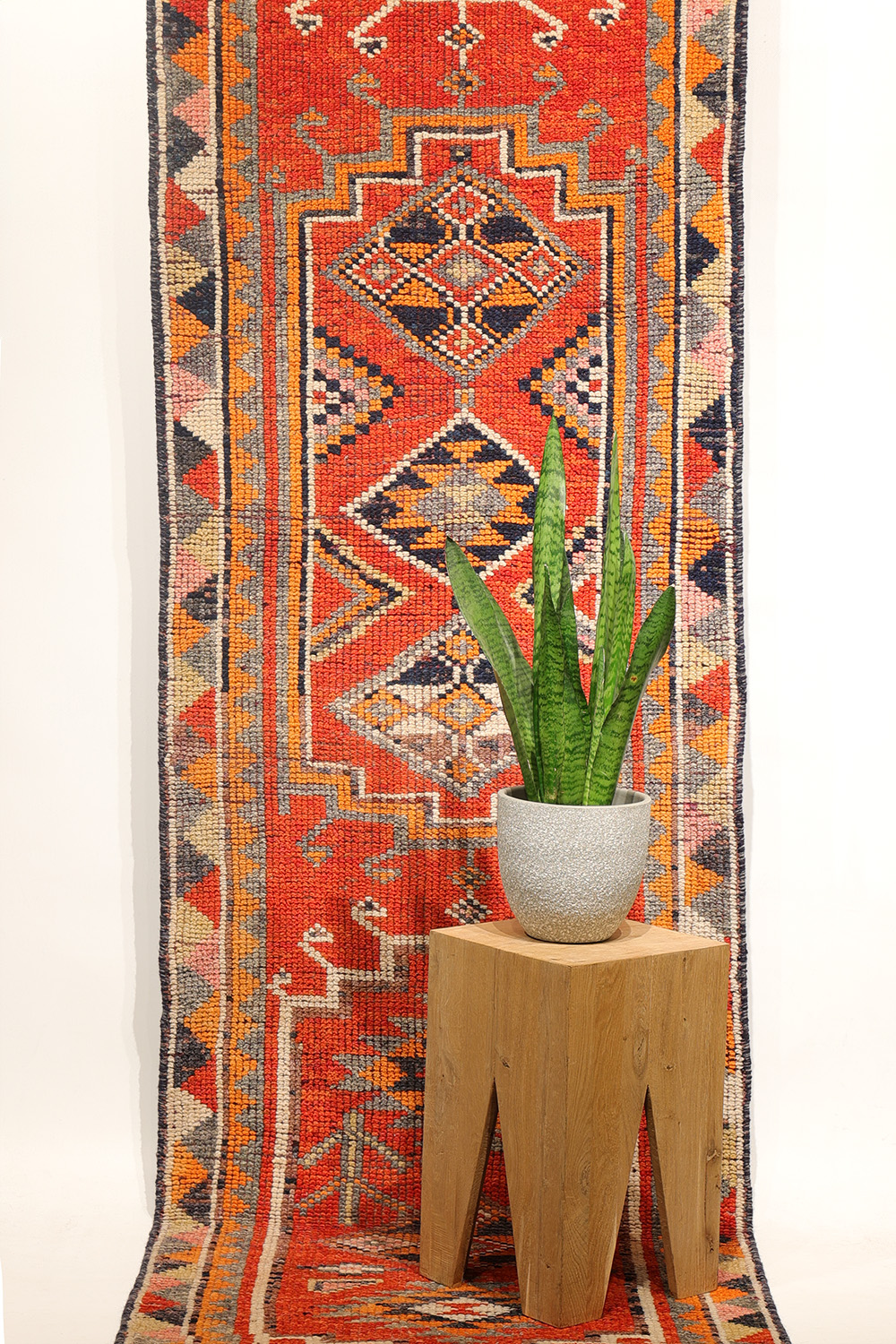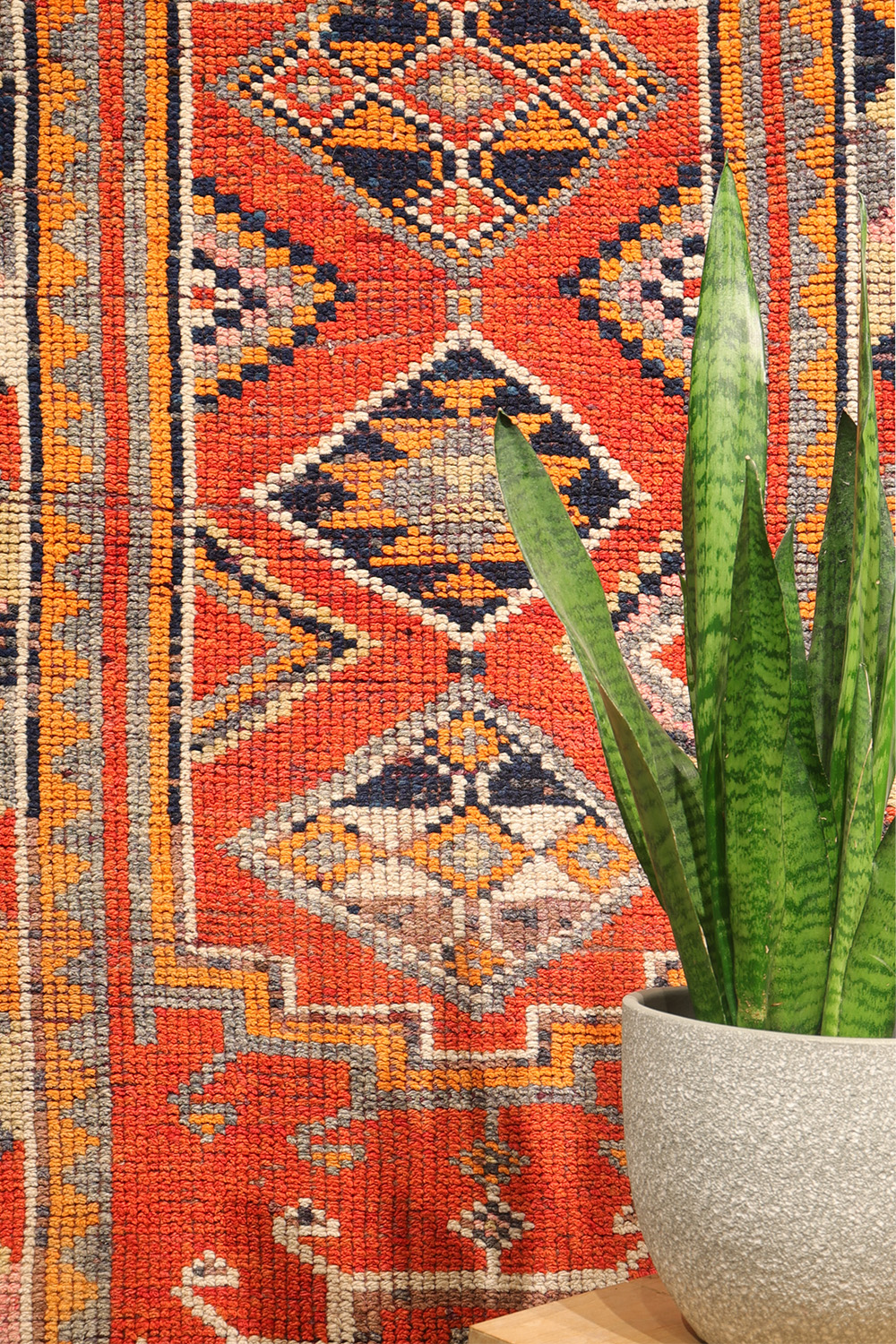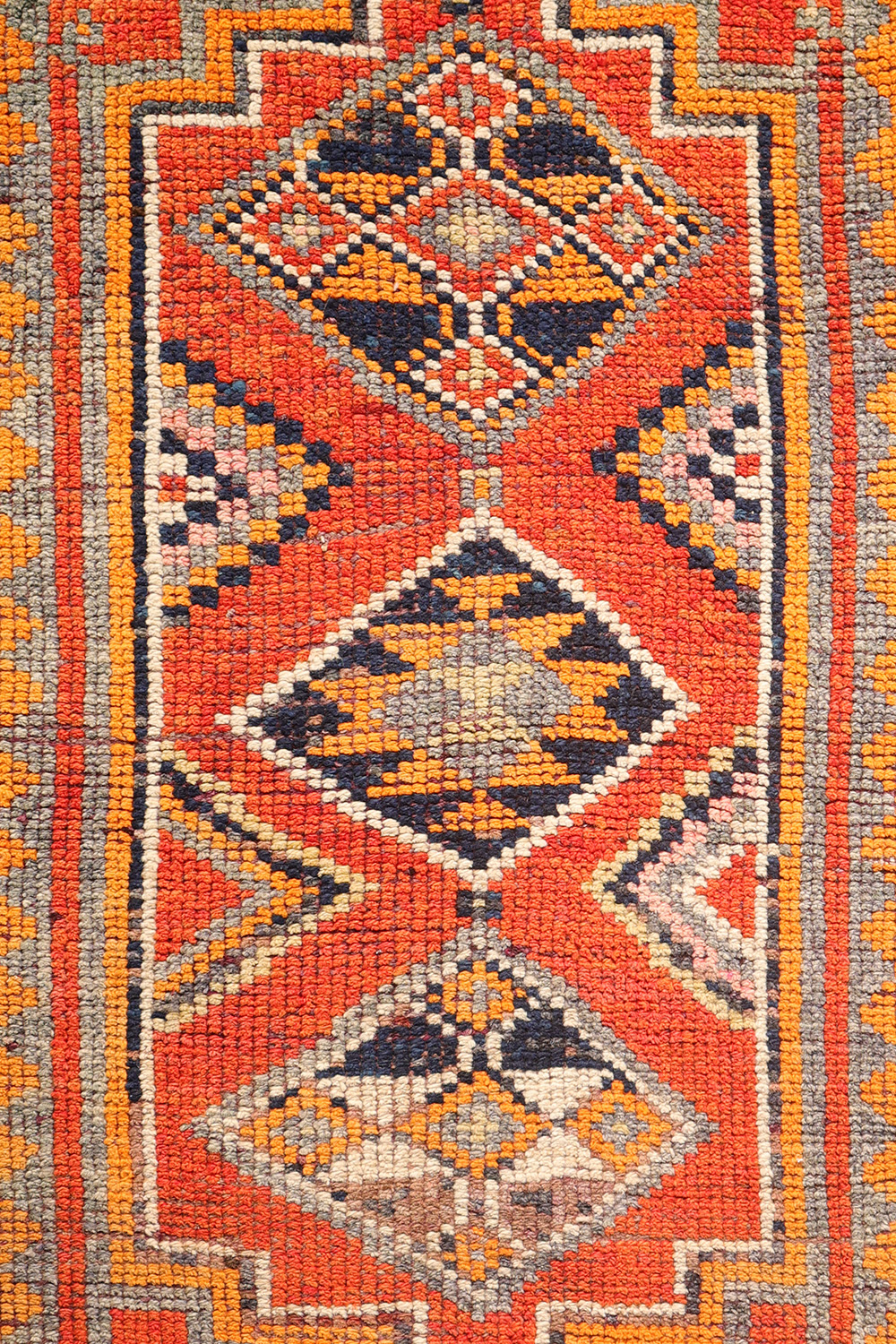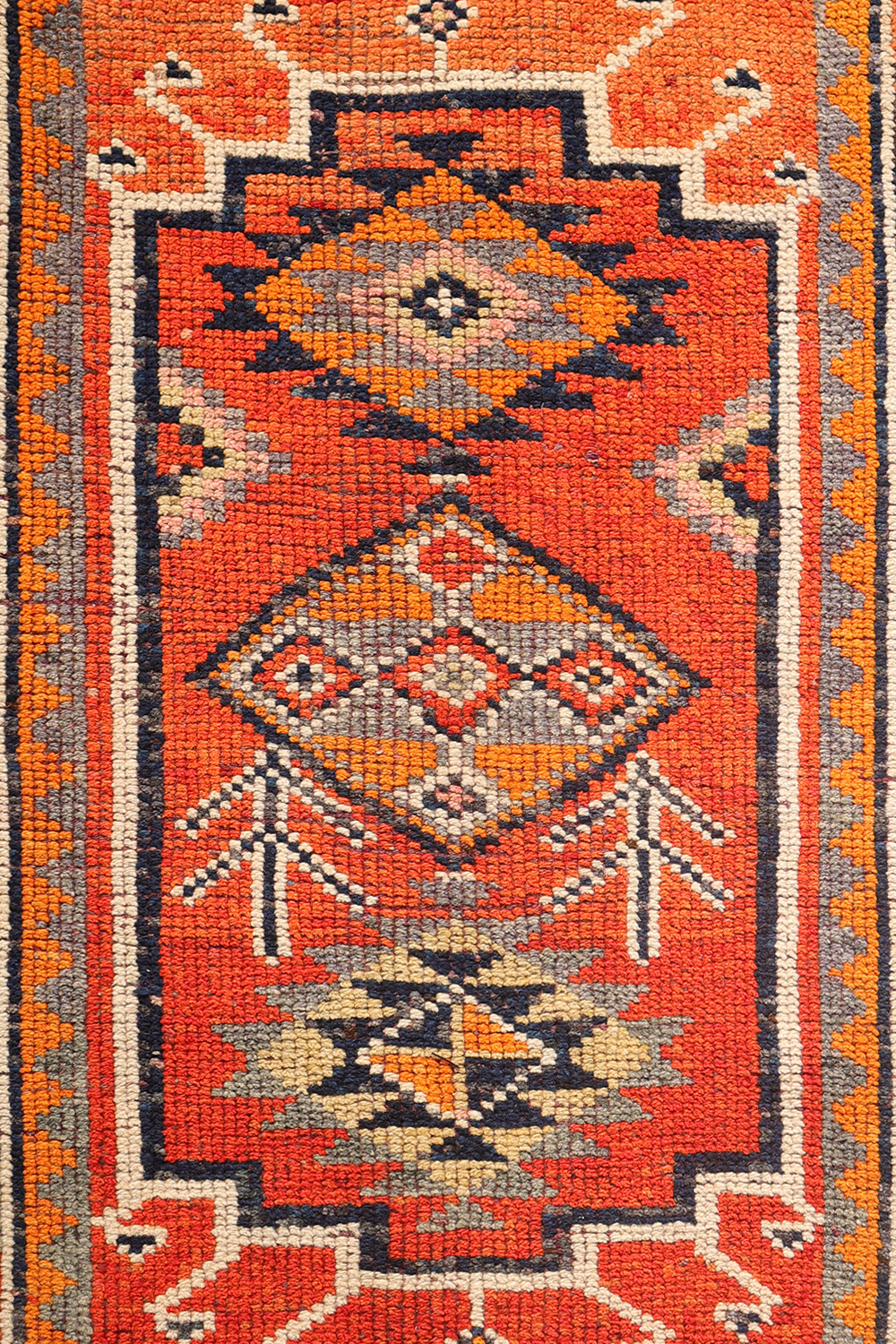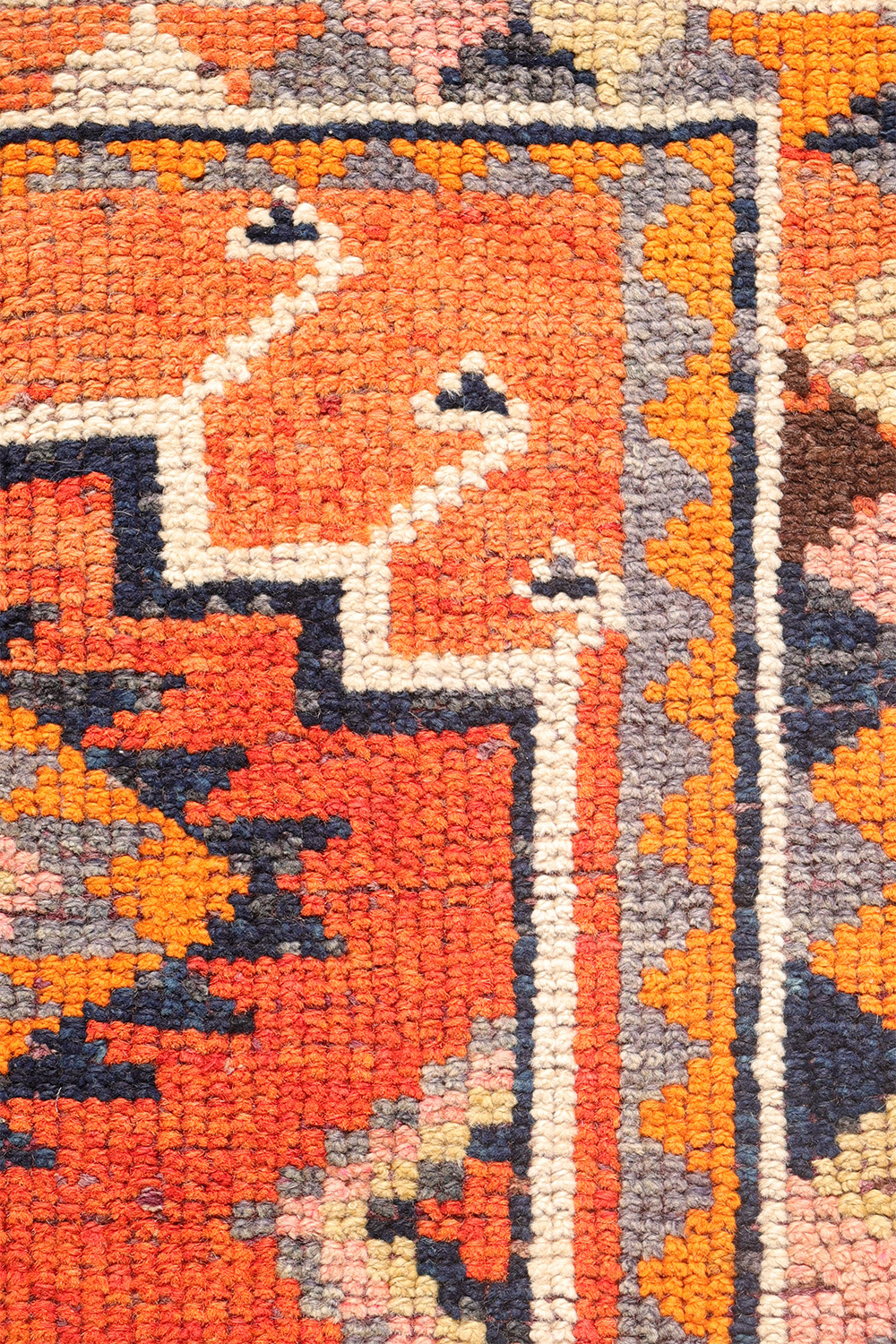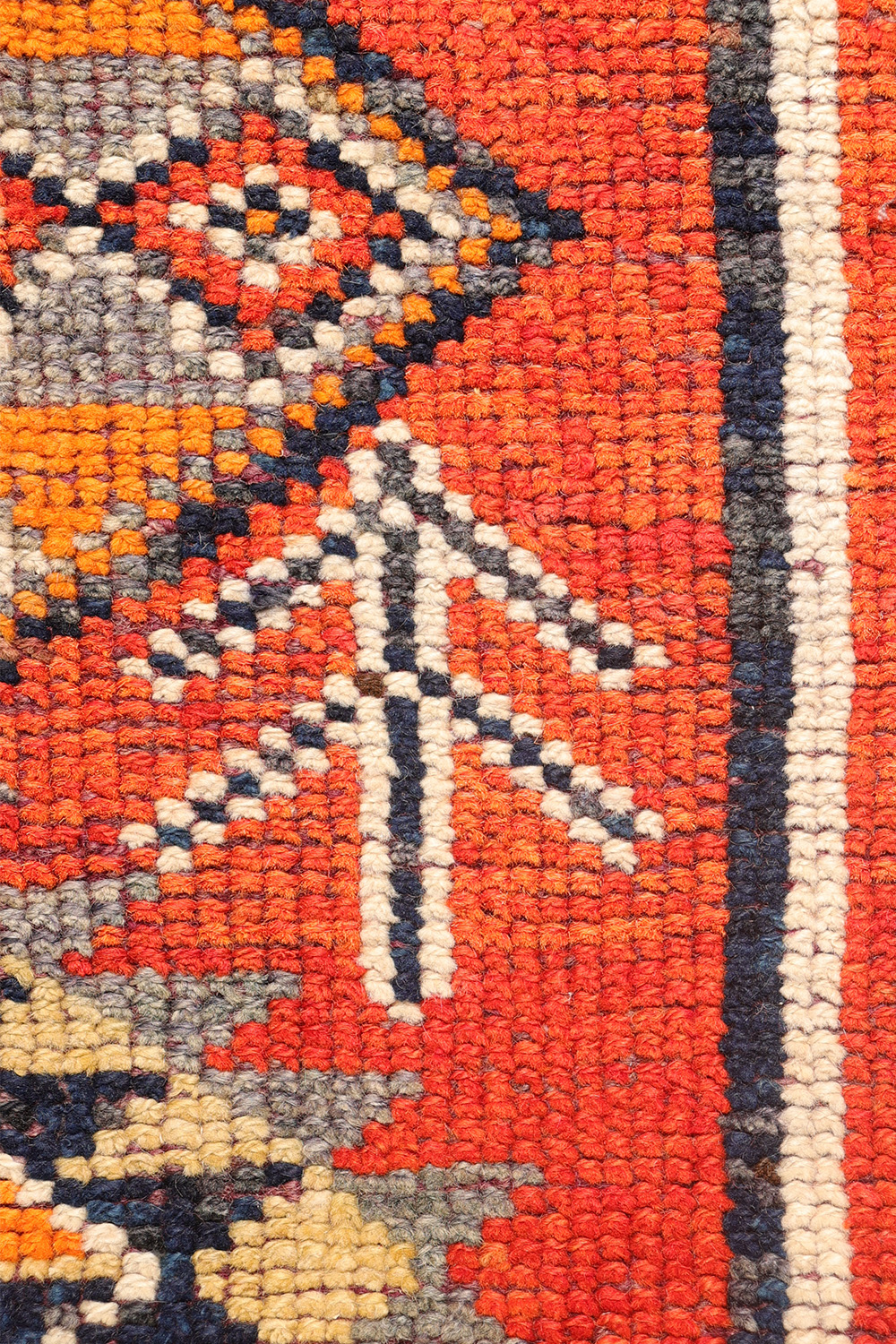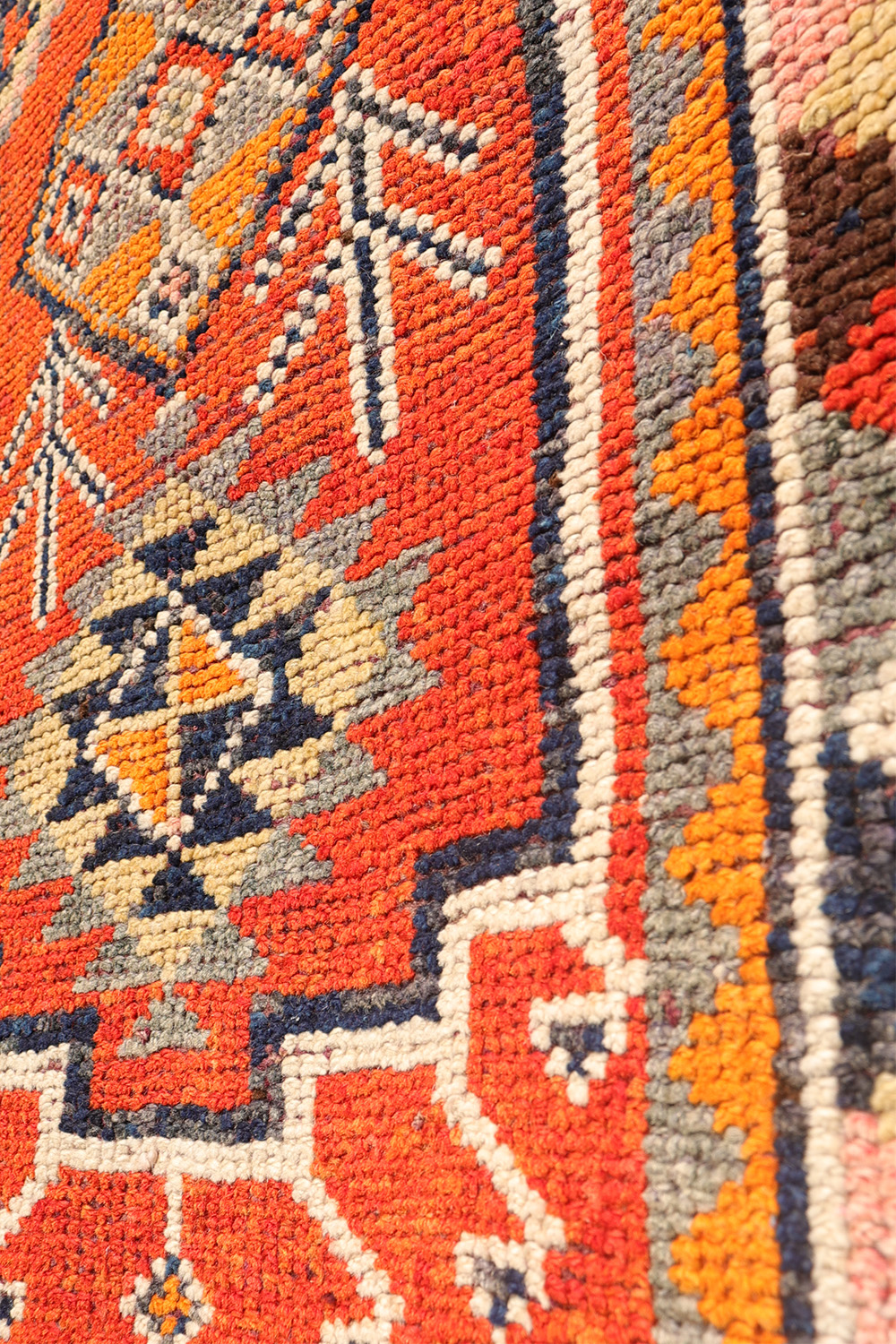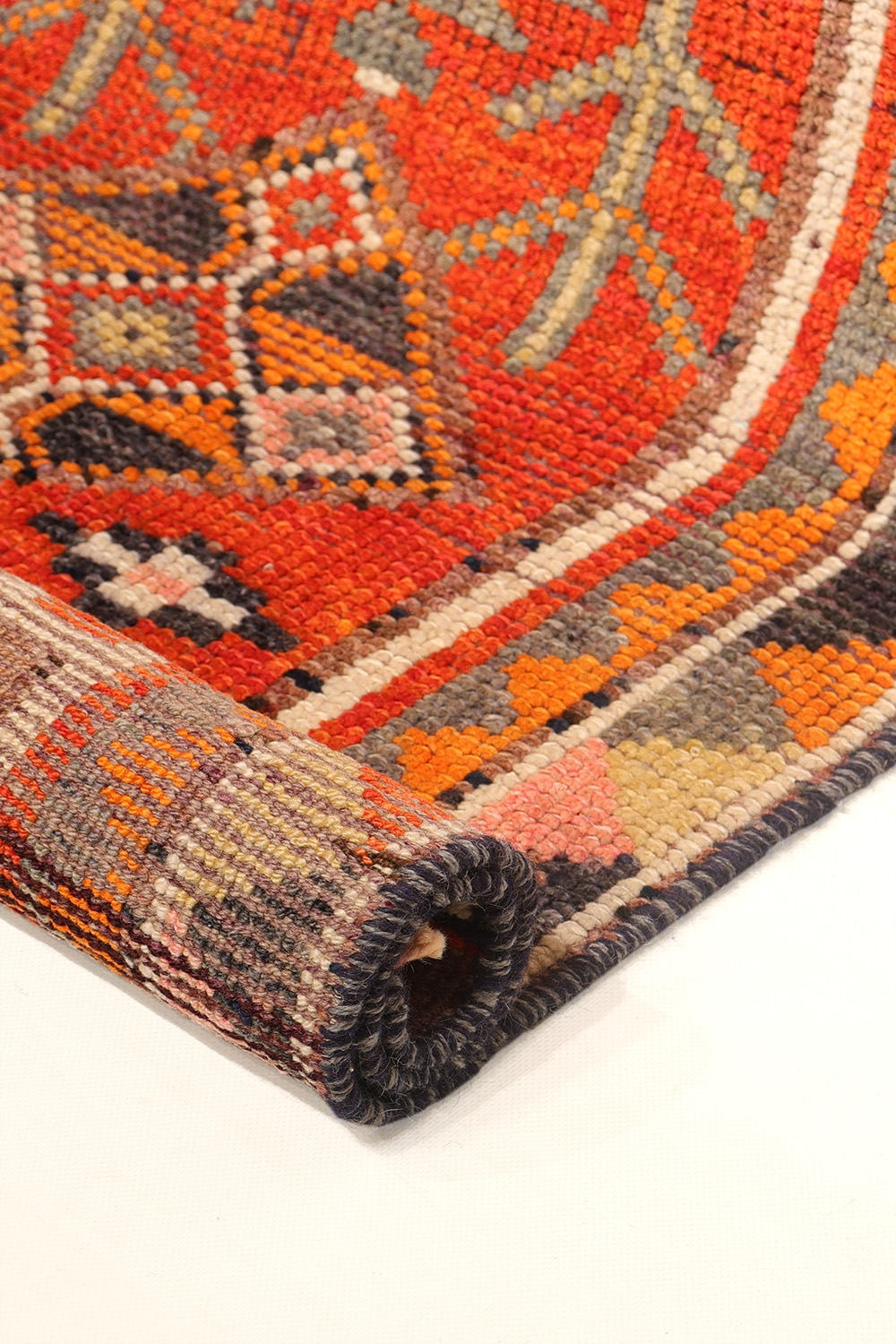Vibrant Vintage Herki Kurdish Runner from Iraq with Bold Colors & Medallion Layout
This vintage Herki runner from Iraq bursts with joyful color. The deep orange central field is beautifully contrasted by rich navy blue accents, creating a lively and eye-catching composition.
Nine medallions are thoughtfully arranged in groups of three, each group framed within larger cartouche-style shapes — a distinctive and elegant layout. Traditional kilim flatweave ends finish both sides of the rug, adding authenticity and texture.
A true statement piece, this runner will breathe new life into even the longest and dullest of hallways!
Material: 100% hand-spun sheep wool
Size: 366×84 cms
Material: 100% hand-spun sheep wool
Size:
Origin: Kurdish Herki, Iraq
Date of weaving: 19
Herki, also spelled Harki (Kurdish: Herkî ,ھەرکی) is a large tribe in Kurdistan. The largest part of this tribe live in Iraqi Kurdistan and a significant number live in Iranian Kurdistan. They are also found in Northern Kurdistan.
The Herkis lived mostly a nomadic life with their herds; however, this changed a lot after 1920 and the Treaty of Sèvres. The new hand-drawn borders of Iran, Iraq, Syria and Turkey hindered Kurdish tribes to continue their way of life.
In 1989 they counted some 20,000 people, living between Urmia and Rawanduz, one of the largest remaining groups of pastoral herders. On their regular movement they brought salt from Iran to Iraq and carried wheat and barley back to Iran.
The Herkis were a very well-armed tribe and were noted to be good warriors and fierce men. Some of their women would occationally be seen fighting alongside men.
Origin: Kurdish Herki, Iraq
Date of weaving: 1970
Herki, also spelled Harki (Kurdish: Herkî ,ھەرکی) is a large tribe in Kurdistan. The largest part of this tribe live in Iraqi Kurdistan and a significant number live in Iranian Kurdistan. They are also found in Northern Kurdistan.
The Herkis lived mostly a nomadic life with their herds; however, this changed a lot after 1920 and the Treaty of Sèvres. The new hand-drawn borders of Iran, Iraq, Syria and Turkey hindered Kurdish tribes to continue their way of life.
In 1989 they counted some 20,000 people, living between Urmia and Rawanduz, one of the largest remaining groups of pastoral herders. On their regular movement they brought salt from Iran to Iraq and carried wheat and barley back to Iran.
The Herkis were a very well-armed tribe and were noted to be good warriors and fierce men. Some of their women would occationally be seen fighting alongside men.
1 in stock
| Weight | 9.9 kg |
|---|
